Menus
- Welcome back
- Yamaha WR 250 X – The Luxury 250
- Kawasaki Ninja 250 R – The uncomplicated one
- MOTORCYCLE test result
- Review of the 250 cubic fleet
- Data Kawasaki Ninja 250 R
- Data Yamaha WR 250 X
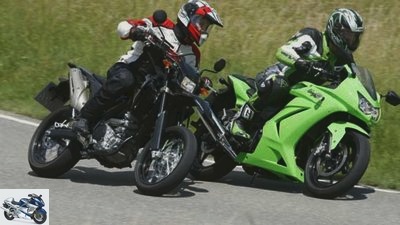
Jahn
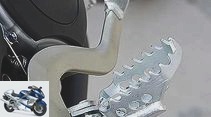
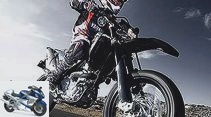
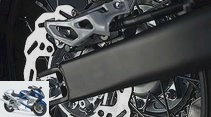
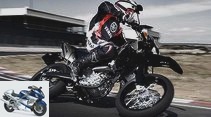
9 photos
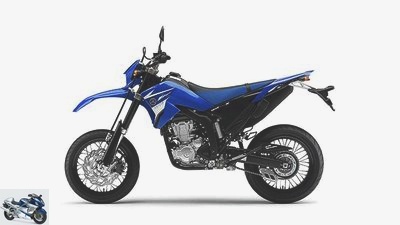
Yamaha
1/9

Yamaha
2/9
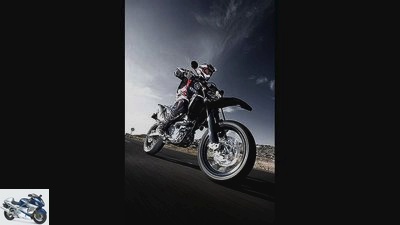
Yamaha
3/9

Yamaha
4/9
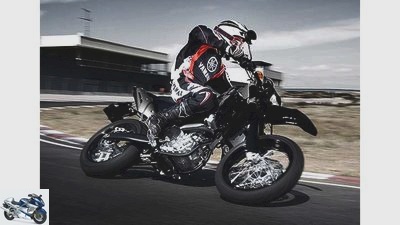
Yamaha
5/9
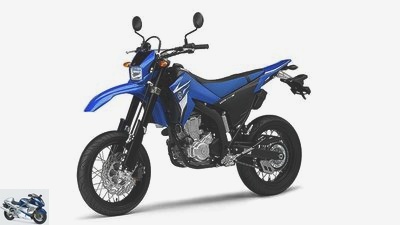
Yamaha
6/9

Yamaha
7/9
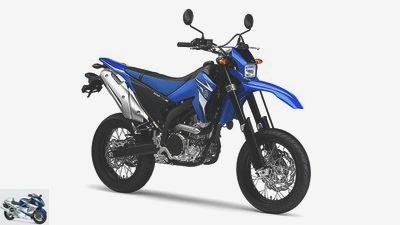
Yamaha
8/9

Yamaha
9/9
Comparison test Kawasaki Ninja 250 R / Yamaha WR 250 X
Welcome back
For a long time it seemed that the glorious 250cc class would at best survive in motorsport. But now Kawasaki and Yamaha are breathing new life into the quarter liter.
Prize question: How big is the difference between the late 1970s and today? Answer: It is almost exactly two strokes, one cylinder, one horsepower and seven kilograms. In terms of technical parameters, it is nothing more than that which separates a Yamaha RD 250 from 1976 from a Yamaha WR 250 X, built in 2008. Just as close together: Kawasaki Ninja 250 R from 2008 and Kawasaki Z 250 A from 1980. Six HP in favor of the Ninja are offset by an additional six kilograms in weight. Displacement and number of cylinders are identical. However, the new one has four instead of the previous two valves per cylinder. Does this look like progress? Is that what people want? You have to be able to ask the question. The answer: Both Kawasaki and Yamaha report unit sales that are above expectations. The time seems ripe for a comeback.
The first seat sample makes it clear that the interested parties must be two very different groups of buyers. At a clear height of 920 millimeters, the ?? inevitably long Yamaha riders, with the 765 millimeters of the Ninja, rather short people feel at home. But it’s not just the concept? here long-legged supermoto with a single-cylinder engine, there the crouched sportswoman with a two-cylinder in-line engine ??, which distinguishes the 250, but also the sales philosophy. Kawasaki offers a functional, simply knitted motorcycle at a low price, while Yamaha offers a high-end fun bike with the finest technology and high entertainment value. And inevitably has to ask for more.
4345 to 5995 euros: In view of the price difference, the concept question is likely to be decided at the shop counter for many. With the little Kawa, the offspring of motorcycles not only get a handsome and properly functioning athlete, but also a motorcycle that is suitable for a level driving license. The Yamaha, on the other hand, falls through the beginner’s grid (0.16 kW per hp) due to its low weight of 137 kilograms with a full tank and would have to be reduced in its power to almost 30 hp or weigh 141.25 kilograms in order to meet the restrictive requirements.
Yamaha WR 250 X – The Luxury 250
But it would be a shame for every horse. With the small supermoto through the city or over winding country lanes ?? that means pure pleasure. Not only because the high-tech single (four valves, inlet and outlet control) from the Yamaha competition department also shows exemplary throttle response and linear power delivery in road trim.
It is also located in an elaborate chassis. Even if the small whisk is already turning in the five-digit range, it can still saddle up easily. Before that is misunderstood: The engine is really good, but the chassis is beyond any doubt. The powerful, fully adjustable 46 mm upside-down fork delivers wonderful feedback with a fine response and comfortable design, and the fully adjustable shock absorber is no less than that. The icing on the cake, however, is the handling. Maneuvered with a light hand on the wide handlebars, the WR sticks from one corner to the other with such a nonchalance that even high-performance athletes have to dress warmly on narrow terrain because, where they are almost done with the brakes, they have an effective 298 millimeter -Double piston system only really starts. Even better: almost any line choice is possible.
Kawasaki Ninja 250 R – The uncomplicated one




8th photos
Pictures: Comparison test Kawasaki Ninja 250 R / Yamaha WR 250 X
To home page
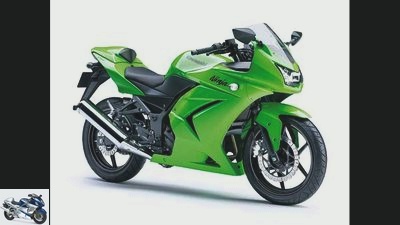
Kawasaki
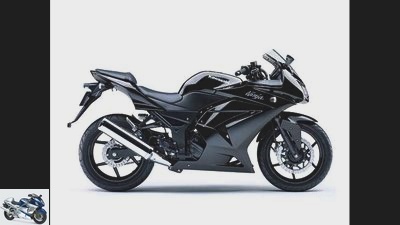
Kawasaki
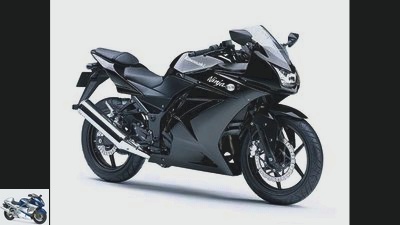
Kawasaki

Kawasaki
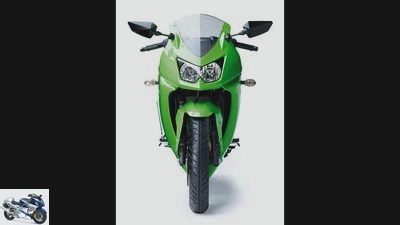
Kawasaki

Kawasaki

Kawasaki
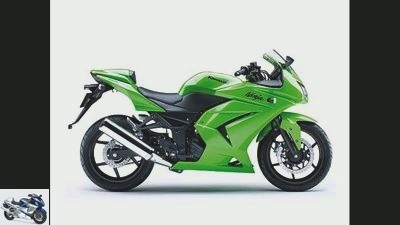
Kawasaki
Ninja 250 R cannot keep up with this idea. It would be unfair to accuse her of this, because she is conditioned differently. Much more civil than the WR with its mini tank (7.6 liters) and the tough competition bench. In other words: under the poisonous green shell there is a good core. The two-cylinder needs speeds? best beyond 7000 / min ?? , but never explodes.
The simple knitted chassis ?? Steel bridge frame, conventional fork, simple shock absorber ?? meets the requirements, but never shines. The Ninja brakes properly, runs straight ahead, unlike the WR, even at top speed, is accurate. However, the brilliant handiness of the WR is missing.
Basically the outstanding talent of the 250 R is its simplicity, its frugality. It does not require the driver to pay special attention or to use too much petrol at the pump. And maybe the 3.1 liters that the Kawa (and, by the way, the Yamaha) consumed on the country road could help the quarter-liter runabouts to a renaissance. The clearly mapped path away from gigantism towards a healthy sense of proportion. In that sense, these two are a promising start.
MOTORCYCLE test result
Yamaha WR 250 X
So nimble, so cocky. The WR shows in an impressive way that it is not just performance that makes you happy. As a proud achievement it can pass to elicit 32 HP measured under the current regulations from the little single.
Kawasaki Ninja 250 R
The traditional way: You take a lively little two-cylinder, put it in a conventional chassis and pack the whole thing as grown-up as possible. The result is an uncomplicated everyday bike with high utility value and low costs.
Review of the 250 cubic fleet
At first it was a question of the engine size (until 1976), then later the 27 HP insurance limit: In any case, there were good reasons for a long time to opt for an inexpensive 250 cc. The best, however, was the driving dynamics. The two-cylinder two-stroke Suzuki GT 250 and Yamaha RD 250 delivered 32 hp in 1976, with a weight of 146 and 144 kilograms respectively. For comparison: Yamaha’s four-stroke XS 650 developed 50 hp and weighed 230 kilograms. Four years later, 250cc four-stroke technology was ready to move into these spheres. The Kawasaki Z 250 A developed 27 hp from 1980 at 10,000 rpm. And the sensation of the year also came from the quarter-liter class: the RD 250 LC, whose water-cooled two-stroke engine was good for a whopping 38 hp.
Data Kawasaki Ninja 250 R
Kawasaki
290mm diameter against 250cm³ displacement
Engine:
Water-cooled two-cylinder four-stroke in-line engine, two overhead, chain-driven camshafts, four valves per cylinder, bucket tappets, wet sump lubrication, injection, Ø 28 mm, G-Kat, alternator 322 W, battery 12 V / 8 Ah, mechanically operated oil bath clutch, six-speed gearbox.
Bore x stroke 62.0 x 41.2 mm
Cubic capacity 249 cm²
Compression ratio 11.6: 1
Rated output 24.0 kW (33 PS) at 11,000 rpm
Max. Torque 22 Nm at 8200 rpm
Landing gear:
Bridge frame made of steel, telescopic fork, Ø 37 mm, two-arm swing arm made of steel, central spring strut with lever system, adjustable spring base, front disc brake, Ø 290 mm, double-piston floating calipers, rear disc brake, Ø 220 mm, double-piston floating caliper.
Cast aluminum wheels 2.75 x 17; 3.50 x 17
Tires 110/70 ZR 17; 130/70 ZR 17
Tires in the test IRC Road Winner
Mass and weight:
Wheelbase 1400 mm, steering head angle 64.0 degrees, caster 82 mm, spring travel f / r 120/130 mm, seat height * 765 mm, weight with a full tank * 172 kg, payload * 167 kg, tank capacity 17.0 liters.
Two year guarantee
Service intervals every 6000 km
Colors green, black
Price:
4345 euros, additional costs around 150 euros
* MOTORCYCLE measurements
Data Yamaha WR 250 X
markus-jahn.com
Potent 250cm³.
Engine:
Water-cooled single-cylinder four-stroke engine, two overhead, chain-driven camshafts, four valves, bucket tappets, dry sump lubrication, injection, Ø 38 mm, G-Kat, alternator 350 W, battery 12 V / 6 Ah, mechanically operated oil bath clutch, six-speed gearbox.
Bore x stroke 77.0 x 53.6 mm
Cubic capacity 250 cm³
Compression ratio 11.8: 1
Rated output 22.6 kW (31 hp) at 10,000 rpm
Max. Torque 24 Nm at 8000 rpm
Landing gear:
Double loop frame made of aluminum, upside-down fork, Ø 46 mm, adjustable rebound and compression damping, two-arm swing arm made of aluminum, central spring strut with lever system, adjustable spring base, rebound and compression damping, front disc brake, Ø 298 mm, double-piston floating caliper, rear disc brake, Ø 230 mm, single-piston floating caliper.
Spoked wheels with aluminum rims 3.00 x 17; 4.00 x 17
110 / 70R 17 tires; 140 / 70R 17
Tires in the test Bridgestone BT 090 ?? G ??
Mass and weight:
Wheelbase 1425 mm, steering head angle 64.8 degrees, caster 76 mm, suspension travel f / r 270/265 mm, seat height * 920 mm, weight with a full tank * 137 kg, payload * 184 kg, tank capacity / reserve 7.6 / 1.5 liters.
Two year guarantee
Service intervals every 10000 km
Color: Black
Price:
5,995 euros, additional costs around 150 euros
Related articles
-
Comparison test Aprilia, Ducati, Kawasaki, KTM and Triumph
Artist Comparison test Aprilia, Ducati, Kawasaki, KTM and Triumph Cool naked bikes Minimalistic, aggressive, greedy and cool ?? Naked bikes focus the…
-
Gargolov Comparison test big bikes: Honda CBR 1100 XX Super Blackbird, Kawasaki Ninja ZX-12R, Suzuki GSX 1300 R Hayabusa, Yamaha FJR 1300 A Two fast, two…
-
Comparison test Aprilia Pegaso 660 Trail against BMW F 650 GS and Yamaha XT 660 R
Markus Jahn Comparison test Aprilia Pegaso 660 Trail against BMW F 650 GS and Yamaha XT 660 R The story of the horse Aprilia had announced that the…
-
Comparison test: BMW K 1300 GT, Kawasaki 1400 GTR, Yamaha FJR 1300 A
Gargolov Comparison test: BMW K 1300 GT, Kawasaki 1400 GTR, Yamaha FJR 1300 A Great tourers in Corsica In the touring segment, there is hardly a way…
-
Comparison test of mid-range bikes with full fairing
Gargolov 26th photos Gargolov 1/26 Kawasaki ER-6f: Inexpensive, compact, light and handy – the powerful parallel twin is fun, the chassis is sporty, firm…
-
Comparison test BMW K 1300 S, Kawasaki ZZR 1400, Suzuki Hayabusa 1300
Gargolov Comparison test BMW K 1300 S, Kawasaki ZZR 1400, Suzuki Hayabusa 1300 Speed bikes in comparison The wind tunnel formed their faces, their…
-
Comparison test of the 1000 super sports car, part 1
Jahn Comparison test of the 1000 super sports car, part 1 The full program Lean, strong, ready for attack, the Suzuki GSX-R 1000 completes the field of…
-
Bilski Test: Yamaha scooters The Yamaha TMax White Max No, it’s not the washing power that makes the TMax so economical. Rather, it’s the atypical…
-
Jahn Top test Kawasaki Ninja ZX-9R New game New luck? Plagued by chassis weaknesses after the last overhaul two years ago, the Kawasaki engineers have…
-
Comparison test: Aprilia, BMW, Husqvarna, KTM and Yamaha
fact Comparison test: Aprilia, BMW, Husqvarna, KTM and Yamaha Single cylinder fun bikes A big heart beats in them, a very big one in fact. The new…